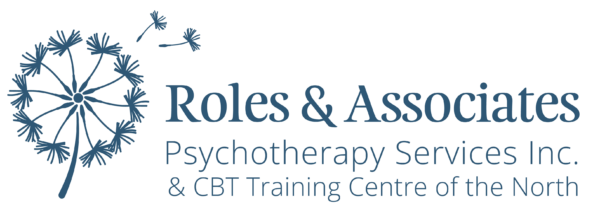Coping with Anxiety: Strategies for Managing Childhood Trauma
Written By Danika Ferreira

Childhood is meant to be a time of innocence and joy, but for some, it can be marred by traumatic experiences such as abuse, neglect, or the loss of a loved one. Experiencing traumatic events during formative years can disrupt a child’s healthy emotional development and make it challenging for them to form healthy relationships with themselves and others. When left untreated, these effects can impact one’s mental and emotional well-being and lead to the development of anxiety-related disorders in adulthood (Kascakova et al., 2020). In this blog post, we will explore strategies for managing anxiety stemming from childhood trauma, providing valuable insights into the healing process.
1. Acknowledge the Impact
The first step in coping with anxiety linked to childhood trauma is acknowledging its existence. Denying or suppressing the emotions associated with trauma can exacerbate anxiety. Accepting that the trauma has had an impact on your life is the foundation for seeking help and healing (Substance Abuse and Mental Health Services Administration, 2014).
2. Seek Professional Support
Working with a qualified mental health professional experienced in trauma can provide invaluable guidance. Therapies like Prolonged Exposure (PE), Cognitive Processing Therapy (CPT) and Eye Movement Desensitization and Reprocessing (EMDR) are tailored to address trauma (Gainer et al., 2020; Stojek et al., 2018). Creative therapies such as art therapy, play therapy, or music therapy can also be beneficial in processing childhood trauma, especially for people who gravitate towards creativity or when words seem to fail. Regardless of the type, therapy can provide a safe space to explore past trauma and develop coping mechanisms. Medication prescribed by a mental health professional may also be beneficial in providing relief from anxiety symptoms (Chand & Marwaha, 2023).
3. Practice Self-Care
Self-care practices can help mitigate anxiety in several ways. A balanced diet and adequate, good-quality sleep can provide your body with the foundational elements necessary for optimal mental well-being and stability. Regular physical activity can alleviate anxiety symptoms by promoting the release of endorphins and reducing stress hormones (Piotrowski et al., 2021). Engaging in activities that bring you joy, pleasure, and a sense of accomplishment also promotes the release of endorphins and can help you build confidence and resilience.
4. Embrace Mindfulness
Mindfulness and relaxation techniques such as deep breathing, meditation, and progressive muscle relaxation can ground you in the present moment and provide a sense of control over your emotions, both of which can help in releasing you from the grip of traumatic memories. These practices can also foster self-awareness and self-compassion (Hofmann & Gómez, 2017).
5. Connect with Your Support Network
Building a support network of friends and family can provide emotional support and a sense of belonging. Sharing your experiences with those you trust can offer empathy, validation, and understanding which can alleviate feelings of loneliness (Dour et al., 2014).
6. Establish Healthy Boundaries
Setting and maintaining healthy boundaries is crucial for managing anxiety stemming from childhood trauma. As childhood trauma can significantly impact our relationships with others, learning to say “no” when needed and surrounding yourself with people who respect your emotional needs can greatly benefit your healing. Similarly, learning to accept help from others and allowing yourself to be vulnerable with loved ones when needed is equally as important. Not only can this prevent feelings of isolation, but it can also help childhood trauma survivors to view others as safe and trustworthy again (Campbell & Renshaw, 2018).
7. Focus on Safety and Stability
Work towards creating a stable environment in your present life to counter the instability experienced during childhood trauma. Establishing routines and engaging in activities that promote a sense of safety can help you feel more in control of your life. Some examples include engaging in your unique self-care strategies, reducing stressors, surrounding yourself with loved ones (including pets!), and identifying your triggers so that you can either avoid them or prepare yourself to face them when necessary (Lancaster et al., 2016).
8. Self-Compassion and Patience
Healing from childhood trauma is a journey that takes time and self-compassion. Individuals should learn to treat themselves with kindness, forgive themselves for perceived faults, and understand that they are not to blame for the trauma they endured. Be patient with yourself, set small, achievable goals, and celebrate each victory along the way to boost your self-esteem and provide a sense of purpose (Braehler & Neff, 2020). Acknowledge your progress, even when it feels slow.
In conclusion, managing anxiety stemming from childhood trauma requires a multifaceted approach that combines professional guidance, self-care, and self-compassion. While the path to recovery is unique for everyone, seeking professional help and utilizing coping strategies can be instrumental in breaking free from the grip of childhood trauma and anxiety. Remember that healing is possible, and with the right strategies, you can gradually lessen the impact of your past, regain control over your mental well-being, and lead a more peaceful and fulfilling life.
References:
Braehler, C., & Neff, K. (2020). Chapter 20: Self-compassion in PTSD. In Tull, M. T., & Kimbrel, N. A. (Eds.), Emotion in posttraumatic stress disorder (pp. 567-596). https://doi.org/10.1016/B978-0-12-816022-0.00020-X
Campbell, S. B., & Renshaw, K. D. (2018). Posttraumatic stress disorder and relationship functioning: A comprehensive review and organizational framework. Clinical Psychology Review, 65, 152–162. https://doi.org/10.1016/j.cpr.2018.08.003
Chand, S. P., & Marwaha, R. (2023, April 24). Anxiety. In StatPearls. StatPearlsPublishing. Retrieved August 4, 2023 from https://www.ncbi.nlm.nih.gov/books/NBK470361/
Dour, H. J., Wiley, J. F., Roy-Byrne, P., Stein, M. B., Sullivan, G., Sherbourne, C. D., Bystritsky, A., Rose, R. D., & Craske, M. G. (2014). Perceived social support mediates anxiety and depressive symptom changes following primary care intervention. Depression and Anxiety, 31(5), 436–442. https://doi.org/10.1002/da.22216
Gainer, D., Alam, S., Alam, H., & Redding, H. (2020). A flash of hope: Eye Movement Desensitization and Reprocessing (EMDR) therapy. Innovations in Clinical Neuroscience, 17(7-9), 12–20.
Hofmann, S. G., & Gómez, A. F. (2017). Mindfulness-based interventions for anxiety and depression. The Psychiatric Clinics of North America, 40(4), 739–749. https://doi.org/10.1016/j.psc.2017.08.008
Kascakova, N., Furstova, J., Hasto, J., Madarasova Geckova, A., & Tavel, P. (2020). The unholy trinity: Childhood trauma, adulthood anxiety, and long-term pain. International Journal of Environmental Research and Public Health, 17(2), 414. https://doi.org/10.3390/ijerph17020414
Lancaster, C. L., Teeters, J. B., Gros, D. F., & Back, S. E. (2016). Posttraumatic stress disorder: Overview of evidence-based assessment and treatment. Journal of Clinical Medicine, 5(11), 105. https://doi.org/10.3390/jcm5110105
Piotrowski, M. C., Lunsford, J., & Gaynes, B. N. (2021). Lifestyle psychiatry for depression and anxiety: Beyond diet and exercise. Lifestyle Medicine, 2(1), e21. https://doi.org/10.1002/lim2.21
Stojek, M. M., McSweeney, L. B., & Rauch, S. A. M. (2018). Neuroscience informed prolonged exposure practice: Increasing efficiency and efficacy through mechanisms. Frontiers in Behavioral Neuroscience, 12, 281. https://doi.org/10.3389/fnbeh.2018.00281
Substance Abuse and Mental Health Services Administration. (2014). Understanding the impact of trauma. National Library of Medicine; Substance Abuse and Mental Health Services Administration (US). https://www.ncbi.nlm.nih.gov/books/NBK207191/

